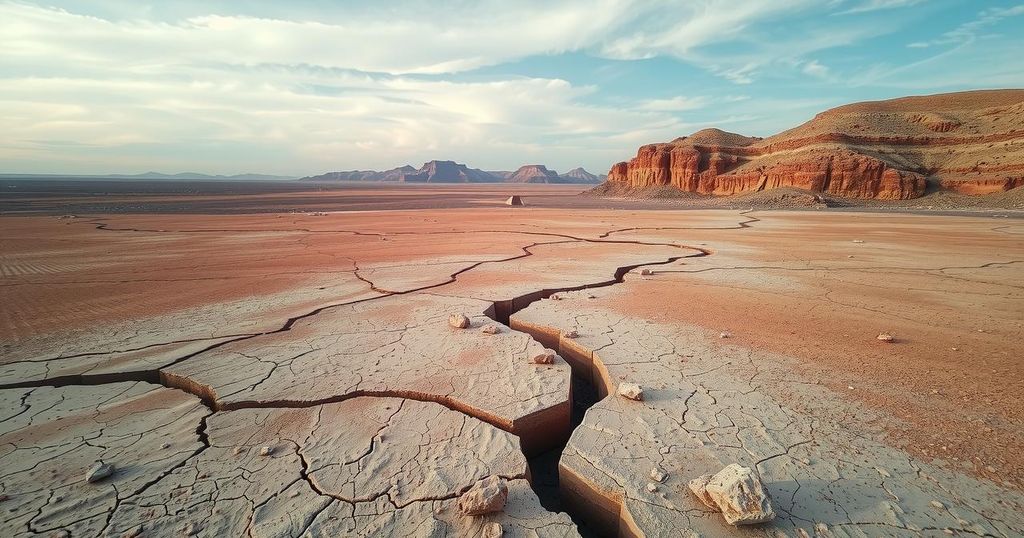A recent study has clarified that the 4.5 magnitude earthquake in Iran was caused by natural tectonic activity, not a nuclear test as erroneously claimed on social media. The research, led by Dr. Benjamin Fernando from Johns Hopkins University, used seismic data to analyze the event and debunked misinformation feeding into geopolitical tensions. The study advocates for improved fact-checking and collaboration among scientists to address the spread of misinformation effectively.
Recent research has clarified that a 4.5 magnitude earthquake in Iran was not the result of a nuclear weapons test, as widely speculated. This study was published in the journal Seismica and aims to combat misinformation circulated on social media following the quake on October 5, 2024, amid rising Middle Eastern tensions. Dr. Benjamin Fernando, who led the study from Johns Hopkins University, emphasized the critical role of accurate scientific communication in geopolitical crises.
The earthquake occurred near Semnan, an area already known for seismic activity. The research team analyzed seismic data, concluding that the earthquake was caused by natural tectonic activity from the collision of the Arabian and Eurasian plates. Their comprehensive study demonstrated that the geological processes were consistent with other earthquakes in the region, definitively ruling out any link to nuclear testing.
Dr. Fernando pointed out the distinct signatures of seismic waves generated by nuclear tests, which are explosive in nature and differ significantly from those created by tectonic activity. Historical data from previous earthquakes in the area, recorded by the Comprehensive Test Ban Treaty Organisation, further reinforces the study’s conclusion that natural forces were responsible for the quake.
The rapid spread of misinformation following the event is concerning. Initial erroneous interpretations of seismic data on social media implicated a nuclear test just minutes after the quake. Some claims inaccurately connected the Iranian earthquake to a different seismic event in Armenia on the same day, gaining traction through conspiracy theories linking it to events in Israel.
Despite a lack of evidence for deliberate disinformation, the researchers noted the sophisticated use of seismic data by those promoting the nuclear test narrative—indicating the potential influence of knowledgeable individuals. Notably, some of the most viral misinformation posts originated from accounts associated with disinformation campaigns backed by Russian entities.
The mischaracterization of the earthquake was not limited to social media; it quickly permeated international news coverage, particularly within Indian English-language media that parroted each other’s unfounded claims. Reports arose from various other countries, misattributing the seismic data and supporting the false narrative of a nuclear test.
To counter this concerning trend, the researchers advocate for enhanced collaboration among seismologists for rapid fact-checking and correction of data misinterpretations. Dr. Saman Karimi, a study co-author, emphasized the need for scientific agencies to release detailed reports to combat misinformation, suggesting partnerships between social media platforms and credible scientific organizations.
The context of the earthquake in Iran is significant because it occurred during heightened tensions regarding nuclear capabilities in the region. Given the historical backdrop of such geopolitical crises, public reactions often lead to the spread of misinformation. Understanding seismic activity and its natural causes is pivotal in differentiating scientific facts from speculative claims that can escalate geopolitical tensions.
In conclusion, this study decisively demonstrates that the 4.5 magnitude earthquake in Iran resulted from natural geological processes rather than a covert nuclear test. It highlights the critical need for accurate representation of scientific data to prevent misinformation during geopolitical disputes. Enhanced rapid-response strategies in the scientific community can help ensure that accurate information prevails during crises, thereby mitigating the impact of misinformation and disinformation campaigns.
Original Source: www.wfxg.com






